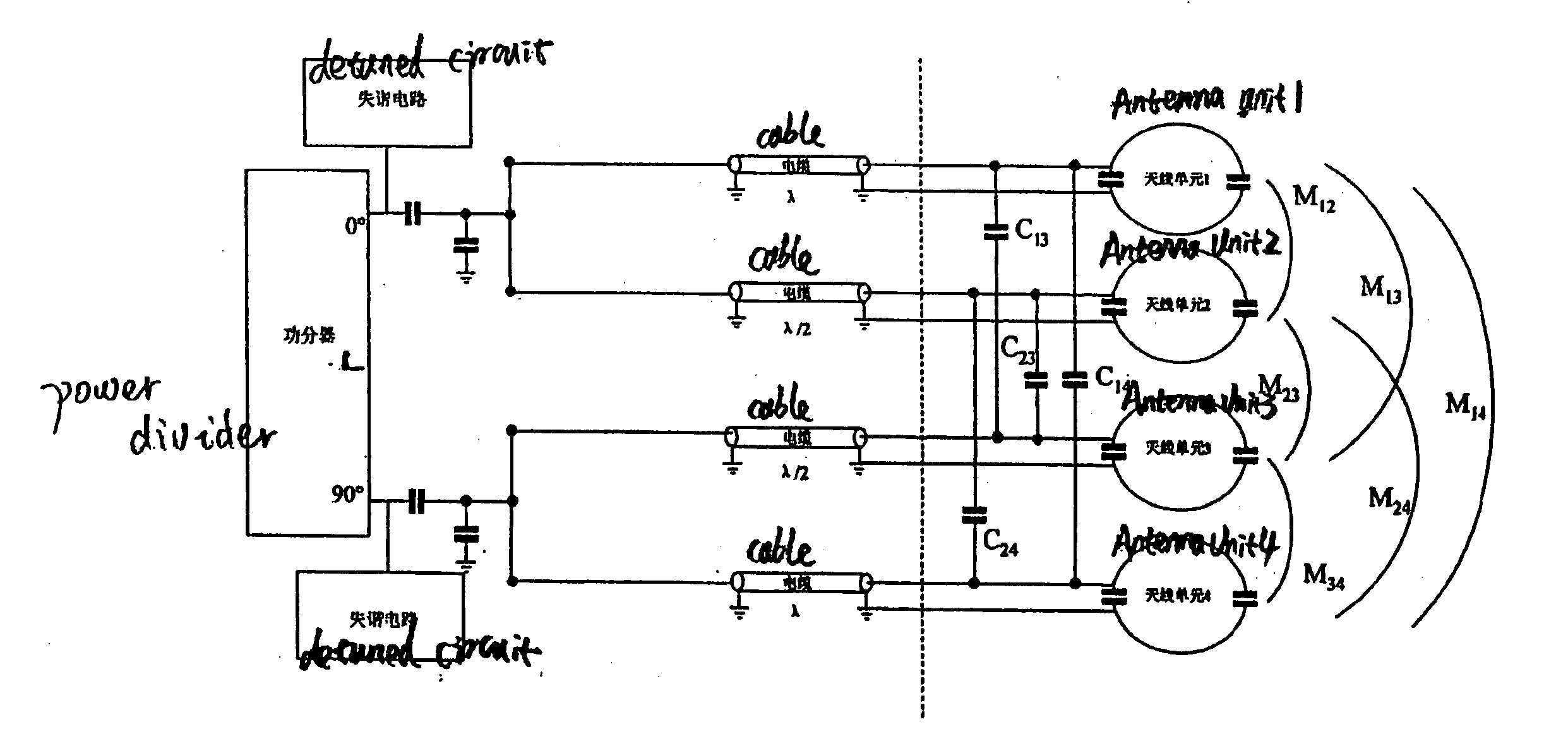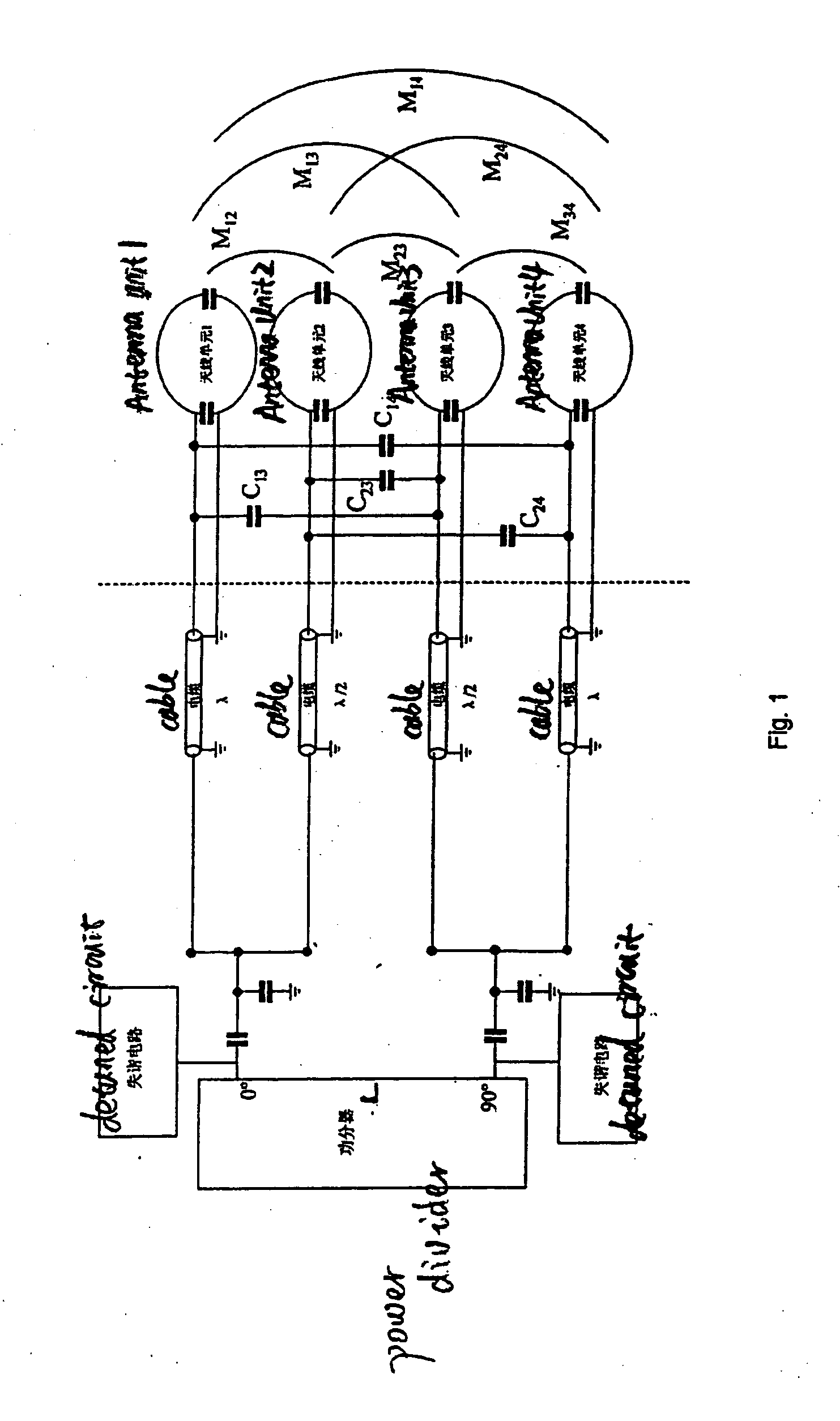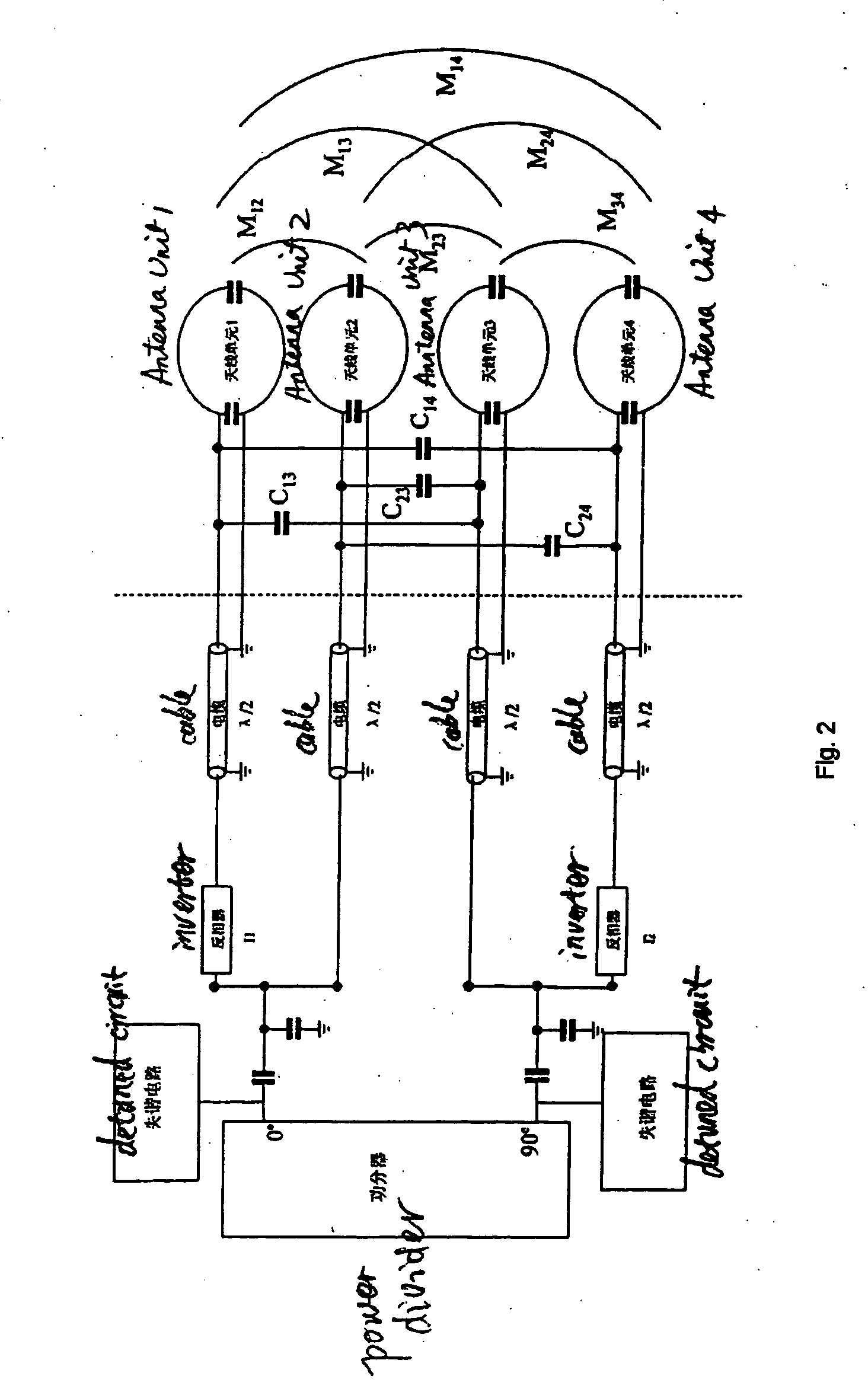Method for developing a transmit coil of a magnetic resonance system
a technology of magnetic resonance system and transmit coil, which is applied in the direction of magnetic measurement, instruments, measurement devices, etc., can solve the problems of increasing the complication reducing the quality factor, and the emission efficiency of the antenna unit, so as to reduce the cost of manufacture and maintenance the quality factor and emission efficiency of the rf transmit coil is high, and the effect of reducing the cost of the transmission coil
- Summary
- Abstract
- Description
- Claims
- Application Information
AI Technical Summary
Benefits of technology
Problems solved by technology
Method used
Image
Examples
Embodiment Construction
[0029] Referring to FIG. 2, the section of stimulus signals input and detuned circuit outside an RF transmit coil in the prior art is shown to the left of the broken line, and the section of the RF transmit coil and decoupling parts of the RF transmit coil in the prior art is shown to the right of the broken line. In this embodiment, it is taken as an example that the RF transmit coil has four antenna units i.e. antenna units 1 to 4 as shown in FIG. 2. The detuned circuit and the orthogonal stimulus signals are respectively connected with the antenna units 1 to 4 via a half-wavelength cable. Within this, a 0° signal and 90° signal are divided from a power divider, and the 0° signal passes through a half-wavelength cable directly and passes through an inverter I1 first and then a half-wavelength cable respectively to carry 0° and 180° signals into the antenna units; the 90° signal passes through a half-wavelength cable directly and passes through an inverter 12 first and then a half-...
PUM
 Login to View More
Login to View More Abstract
Description
Claims
Application Information
 Login to View More
Login to View More - R&D
- Intellectual Property
- Life Sciences
- Materials
- Tech Scout
- Unparalleled Data Quality
- Higher Quality Content
- 60% Fewer Hallucinations
Browse by: Latest US Patents, China's latest patents, Technical Efficacy Thesaurus, Application Domain, Technology Topic, Popular Technical Reports.
© 2025 PatSnap. All rights reserved.Legal|Privacy policy|Modern Slavery Act Transparency Statement|Sitemap|About US| Contact US: help@patsnap.com



